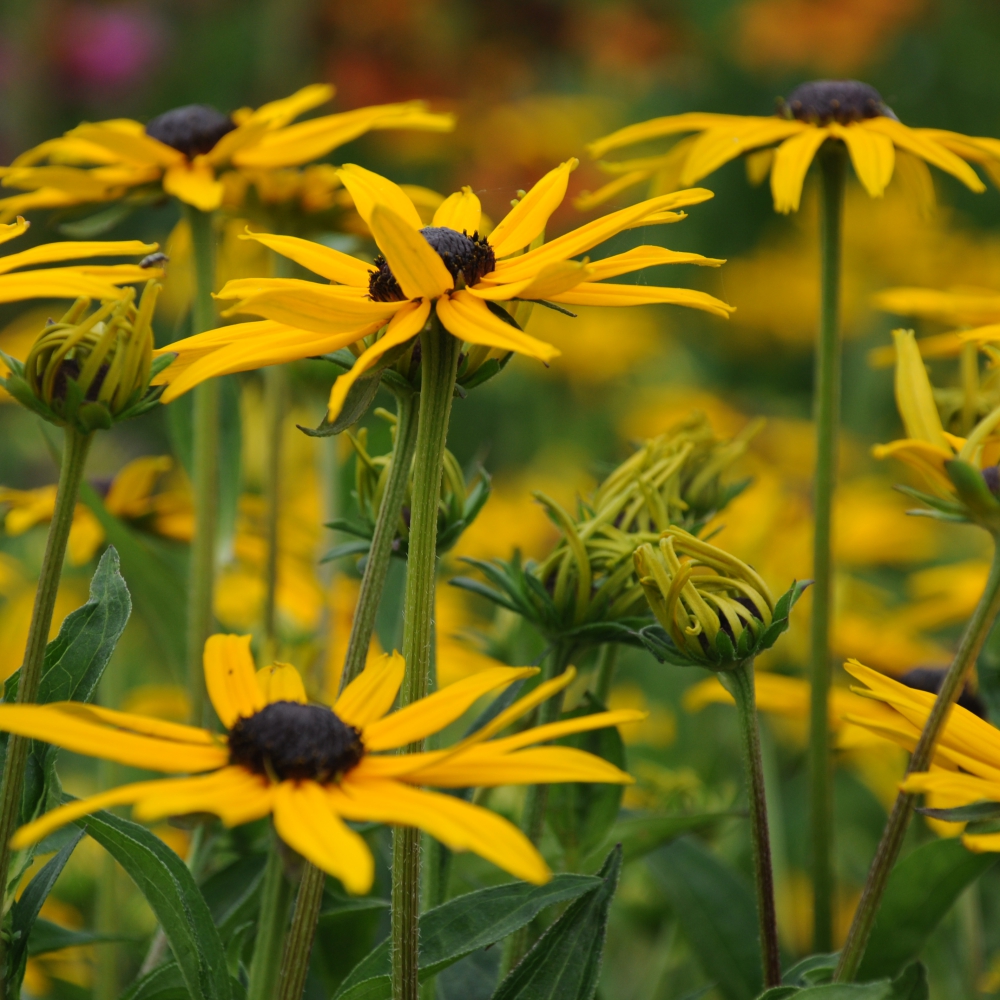The best long-flowering plants
At the height of summer some gardens are beginning to run out of steam. I'm always on the look-out for flowers that have staying power and these are some of my favourites.
Verbena bonariensis is one of the most requested plants by my clients, even if they don't know its name. It flowers on tall wiry stems from June until mid-autumn and will only lose its structure after a heavy frost. It doesn't live long but as any gardener will tell you Vb self sows with complete abandon, almost to the point of being really annoying. Give it lots of sun and almost any soil except really heavy clay. Vb's little brother Verbena lollipop grows well in a pot if you're strapped for space.
Looks good with Echinacea purpurea, Helenium Waldtraut and Calamagrostis x acutiflora Karl Foerster.
Anthemis tinctoria starts a bit earlier in the year. Most, like A.t. Sauce Hollandaise or EC Buxton, prefer light and free draining soils and should be cut back hard after flowering. They make good cut flowers if you can bear to take them out of the garden.
Looks good with Geranium Rozanne, Knautia macedonica and Verbascum chaixii.
One of the stars of the late summer garden Aster x frikartii Monch starts flowering in July and will go ontil mid-autumn. Loved by insects, this plant likes fertile soil with some moisture to produce its best efforts although it will survive most conditions.
Looks good with Euphorbia characais Humpty Dumpty, Penstemon Alice Hindley and Rudbeckia fulgida var, sullivantii Goldsturm.
Penstemon Garnet is my go-to plant for a reliable red flower that doesn't get powdery mildew and lasts more than one summer. Like many plants in this list it likes full sun and fertile soil. I've had some disasters with heavy clay soil. It is not 100% frost-proof so whilst I dead-head it through the summer I don't cut it back fully until early spring. Confusingly this is also callled Penstemon Andenken an Friedrich Hahn and you will often see both names on the label. Most Penstemons are equally long-flowering and other favourites of mine include the deep purple P. Raven and the light blue P. Alice Hindley.
Looks good with Centranthus ruber Alba, Pennisetum Red Buttons and Salvia sylvestris Dear Anja.
Another great red flower, Potentilla Gibson's Scarlet is at the fire-engine end of the spectrum. It's great for the front of the border but give it plenty of room as the flower stems reach out further than you would think if planting early in the year. Full sun and well-drained soil will keep the plant happy.
Looks good with Geum Princess Julian, Agapanthus Black Pantha and Gaura lindheimeri Siskyou Pink.
If you can only have one of these plants in your garden this is the one I'd go for. Rudbeckia fulgida var. sullivantii Goldsturm flowers from July until late autumn and continue to look good through the winter if the weather is not too wet and windy. And, even better, it loves heavy clay soils, perfect for London.
Looks good with Helenium Moerheim Beauty, Verbena bonariensis and Phormium Yellow Wave.
Rosa Iceberg can be grown as a shrub but as it is pretty vigorous I think it's better as a climber. It produces a magnificent flush in June and if you dead-head properly it will continue to flower on and off until December. It doesn't have a strong scent but is usually pretty healthy. Like most roses is is as happy as Larry in clay soil.
Looks good on its own.
Winner of the RHS Flower of the Decade competition Geranium Rozanne doesn't really get into its stride for a month after most of the other blue Geraniums like G. Orion or G. Johnson's Blue. But once it does get going there is no stopping it, most I know go on until November and they don't need dead-heading. It will even grow in quite a bit of shade but for the best results plant in full sun in almost any soil except that which is waterlogged.
Looks good with Persicaria amplexicaulis Firetail, Phlomis russeliana and Salvia nemoraosa Caradonna.
The poster flower for the millenial trend of prairie planting Echinacea purpurea will probably outlast many others that don't like the general dampness of our climate. Strikingly architectural, even after the colour has faded, they are a favourite of gardeners and pollinating insects alike. It can take a few years to bulk up so it's not a plant to be impatient with. It likes full sun and well-drained but not dry soil - not picky at all - but worth it. This one is E.p. Magnus Superior but there are many different varieties and colours. I've not had much luck with the orange ones but E.p. White Swan is a reliable and good-looking culltivar.
Looks good with Gaura lindheimeri Whirling Butterflies, Sedum spectabile Autumn Joy and Calamagrostis brachytricha.
And finally, Erigeron karvinskianus, sometimes called E.k. Profusion or Mexican Fleabane. This is the plant you will see self-sown in the paving at National Trust properties. It flowers ceaselessly from May until November and does not need dead-heading; the newly emergent flowers are white, fading to pink as they age. It's great at the front of the border, keeping weeds at bay with its carpeting growth, and I like to plant it in pots. It's fairly unfussy about the conditions it grows in making really good value for money and it's self-sowing habit means it's quite difficult to kill!
Looks good with Olea europea, Stipa tenuissima and Sisyrinchium striatum.










